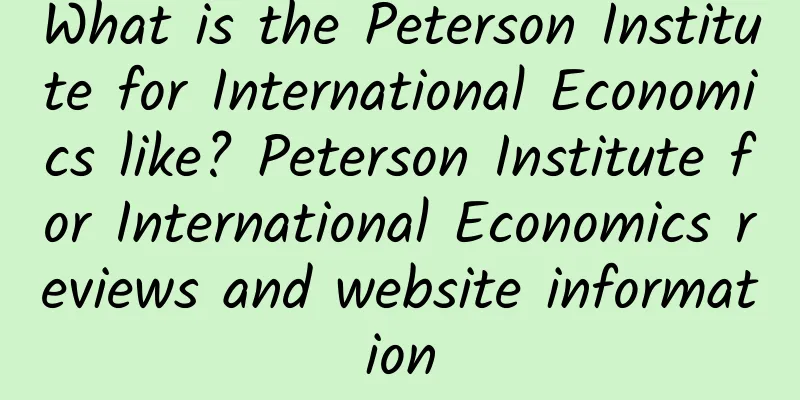What is the Federal Deposit Insurance Corporation? Federal Deposit Insurance Corporation reviews and website information

|
What is the Federal Deposit Insurance Corporation? The Federal Deposit Insurance Corporation (FDIC) is a deposit insurance company in the United States. It was founded by the U.S. federal government in 1933 and is headquartered in Washington, D.C. It mainly provides insurance for commercial bank deposit customers. Website: www.fdic.gov Federal Deposit Insurance Corporation (FDIC): a financial insurance agency that protects depositors’ interestsIn the modern financial system, banks and savings institutions are an important part of economic activities. However, history tells us that banks are not always stable, especially during economic turmoil or financial crisis. In order to protect ordinary depositors from losses caused by bank failures, the Federal Deposit Insurance Corporation (FDIC) came into being. The FDIC is an independent agency established and supported by the U.S. federal government. Its core mission is to provide insurance protection for customer deposits of commercial banks and savings institutions. Through this mechanism, the FDIC not only enhances public trust in the banking industry, but also provides important support for the stability of the financial system. This article will explore the historical background, operation mode, insurance coverage, and status and role of the FDIC in the global financial system. The historical origin and development of FDICThe birth of the FDIC can be traced back to 1933, during a very challenging period in American history - the Great Depression. In the early 1930s, due to the impact of the economic crisis, a large number of banks closed due to bank runs and capital shortages, causing countless depositors to lose their life savings. According to records, more than 9,000 banks closed in the United States between 1930 and 1933 alone, involving billions of dollars. Faced with such a serious situation, the US government realized that it needed to take measures to restore public confidence in the banking industry. Therefore, the FDIC was formally established in the Glass-Steagall Act signed by President Franklin Delano Roosevelt. The Act came into effect on June 16, 1933, marking the official start of the FDIC as an independent federal agency. Since its establishment, the FDIC has undergone several major reforms and developments. Initially, its deposit insurance limit was set at $2,500, but with changes in the economic environment and the impact of inflation, this limit has been gradually increased. Currently, the FDIC provides insurance coverage of up to $250,000 for each depositor's account in each bank. In addition, the FDIC's functions have also expanded from simple deposit insurance to include multiple areas such as bank supervision, risk management, and bankruptcy liquidation. FDIC's Core Functions and ResponsibilitiesAs a federal agency, the FDIC has multiple critical functions that together form the cornerstone of its role in protecting depositors and maintaining the stability of the financial system. The following are the main responsibilities of the FDIC:
By performing the above duties, the FDIC effectively reduces the negative impact of banking crises on ordinary people and society as a whole, while promoting the healthy development of the financial market. FDIC Insurance Coverage and LimitationsAlthough the deposit insurance provided by the FDIC brings great security to depositors, it is also important to understand its specific coverage and limitations. The following is a detailed analysis of what the FDIC insurance covers: Account Types CoveredThe FDIC provides insurance protection for many types of deposit accounts, mainly including the following categories:
It is important to note that different types of accounts follow specific rules when calculating insurance limits. For example, multiple individual accounts of the same depositor at the same bank are combined, while joint accounts are insured separately according to each owner's share. Maximum amount of insurance coverageCurrently, the FDIC provides insurance coverage for up to $250,000 per depositor per bank. This means that if you have multiple accounts at the same bank, as long as they are in the same category (such as personal accounts), their combined balance cannot exceed $250,000. However, if you have accounts at different banks, the insurance limit for each bank is calculated independently. What is not covered by insuranceAlthough FDIC insurance coverage is extensive, there are some financial products that are not covered. These include:
Therefore, when choosing financial products, depositors must clearly distinguish which ones are covered by FDIC insurance so as to better protect the safety of their assets. FDIC's operating mechanism and funding sourcesAs an independent federal agency, the FDIC's funding does not rely on taxpayers, but mainly comes from the following sources: Deposit insurance premiumThe FDIC's main source of income is deposit insurance premiums charged to insured banks. These fees are calculated based on the bank's deposit size, risk level, and other financial indicators. High-risk banks are generally required to pay higher insurance premiums to reflect their potential for default. This risk-based pricing mechanism helps incentivize banks to improve risk management practices and reduce the vulnerability of the entire financial system. Investment incomeIn addition to insurance premiums, the FDIC also uses part of its funds to invest in low-risk financial instruments such as government bonds to increase capital. These investment incomes further supplement the FDIC's operating funds, ensuring that it can respond quickly to bank failures when necessary. Special FinancingIn extreme cases, if the deposit insurance fund is insufficient to cope with a large-scale bank failure, the FDIC has the right to apply for a temporary loan from the U.S. Treasury. This mechanism provides an additional safety net for the FDIC, enabling it to continue to perform its duties of protecting depositors' interests. The status and influence of FDIC in the global financial systemAs one of the earliest deposit insurance companies in the world, the successful experience of the FDIC has become a model for many countries to follow. The following is an analysis of the importance of the FDIC and its impact on the global financial system from an international perspective: Enhance public confidenceThe existence of the FDIC has greatly enhanced the public's trust in the banking industry. By providing insurance for deposits, the FDIC effectively curbed the occurrence of bank runs and reduced the spread of panic during the financial crisis. This trust mechanism is not limited to the United States, but also provides valuable experience for other countries. Promoting financial stabilityAs an important part of the financial system, the FDIC plays an important role in maintaining market order and preventing systemic risks. Through strict regulatory measures and timely intervention actions, the FDIC has helped avoid many potential regional or national financial crises. Promoting international cooperationIn recent years, the FDIC has actively participated in cooperation projects with international financial organizations and shared experiences and best practices with deposit insurance companies in other countries. This cross-border cooperation not only helps to enhance the overall resilience of the global financial system, but also promotes coordination and collaboration among countries in dealing with cross-border financial risks. Conclusion: The value and future prospects of the FDICSince its establishment in 1933, the Federal Deposit Insurance Corporation (FDIC) has gone through nearly a century of development. During this period, it has always adhered to its original aspirations, committed to protecting the interests of depositors, maintaining financial stability and promoting the healthy development of the industry. By continuously optimizing insurance policies, strengthening regulatory measures and expanding international cooperation, the FDIC has successfully adapted to the rapidly changing global economic environment. Looking ahead, with the rapid development of financial technology and the deepening of globalization, the FDIC faces new opportunities and challenges. How to balance innovation and risk and how to cope with the changes brought about by digital transformation will be the focus of the FDIC in the future. In any case, we have reason to believe that with its profound historical accumulation and outstanding professional capabilities, the FDIC will continue to play an irreplaceable role in the global financial system. If you want to learn more about the FDIC, you can visit its official website: www.fdic.gov . |
<<: How is JAKO? JAKO review and website information
>>: What is Rosaotica Group like? Rosaotica Group reviews and website information
Recommend
Steps for making stir-fried peas and lotus root
Stir-fried peas and lotus root has a light taste a...
How to make delicious shrimp paste
Shrimp paste is a common condiment in life. It is...
What is 20th Century Fox like? 20th Century Fox reviews and website information
What is the website of 20th Century Fox? 20th Cent...
How to grow asparagus fern? Things to pay attention to when growing asparagus fern
Asparagus fern is one of the most popular foliage...
How to grow Dendrobium candidum? Cultivation methods and precautions of Dendrobium candidum
Dendrobium candidum is a beautiful ornamental pla...
Watermelon beauty effects and functions
Today I will tell you what kind of beauty effects...
How to store lychees How to store lychees
Lychee is a fruit with high nutritional value. It...
How is Kazakhstan Oil and Gas Exploration and Development Company? Kazakhstan Oil and Gas Exploration and Development Company Reviews and Website Information
What is the website of Kazakhstan Munai Gas Explor...
Commonly used methods for bowel cleansing and detoxification. What foods are good for bowel cleansing and detoxification?
Many women often do bowel cleansing and detoxific...
Crystal orchid language and pictures Crystal orchid medicinal value
Many people think that Crystal Orchid is a kind o...
The efficacy and function of Zenji Maru Persimmon
Zenji Maru Persimmon is a variety of persimmon. Z...
How to make winter melon meatball soup Ingredients and methods of winter melon meatball soup
Winter melon meatball soup is a famous health foo...
How to keep red grapes fresh? How to keep red grapes fresh?
Red grapes are a common fruit that is available i...
Ingredients and methods of garlic-shredded eggplant
I guess most of you have never eaten garlic-shred...
The benefits and effects of red dates ginger paste
Red dates are a very nutritious food. They can be...









